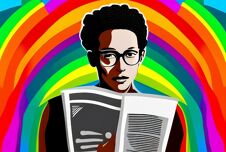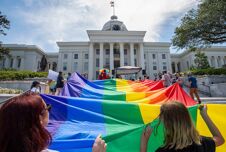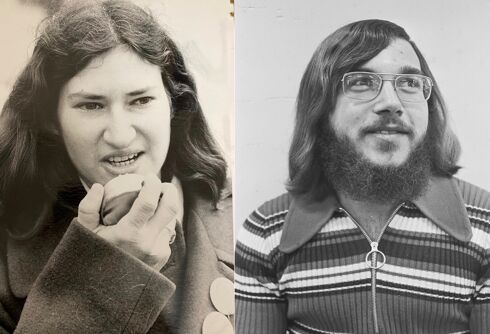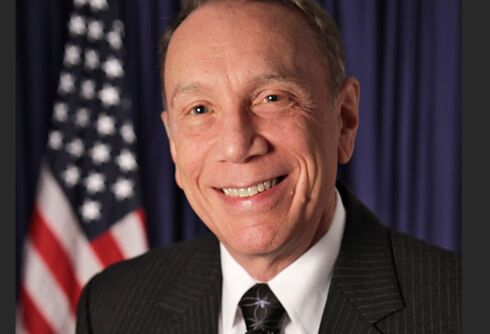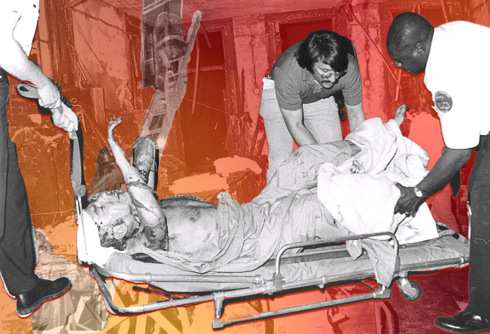Throughout the 1950s and ‘60s, San Francisco’s Tenderloin District was changing fast. Gone were the young professionals, replaced instead by growing numbers of homeless queer and trans people, the street queens and hustlers turning tricks to ensure their survival. These communities were treated as disposable; the Tenderloin’s rundown streets were often strewn with trash thrown by yuppie businessmen, who worked just a stone’s throw away from the dilapidated district.
When Reverend Cecil Williams started working at San Francisco’s Glide Memorial Church in the early 1960s, he made it his mission to serve these communities. The church had always been rooted in philanthropy, but the congregation was largely white and middle class, the help dished out from a distance. Williams – a Black minister with a longstanding focus on social justice – stepped in to give Glide a radical makeover, transforming it into a source of vital and long-standing solidarity for San Francisco’s most marginalized.
Related:
GSAs can be vital for queer youth. The students leading them bear an immense responsibility.
“You’re not leading a club, you’re leading a community.”
It’s no secret that queerness and religion have a thorny relationship. Yet, they aren’t mutually exclusive. Increasingly, we’re seeing books like Hijab Butch Blues and Sarahland, as well as poems like Jesus at the Gay Bar, draw out these links, fleshing out queer, religious narratives in the process.
Never Miss a Beat
Subscribe to our newsletter to stay ahead of the latest LGBTQ+ political news and insights.
Similarly, there are histories of churches like Glide Memorial showing solidarity with radical movements when almost nobody else would. In 1964, Williams played a key role in creating the Council on Religion and the Homosexual (CRH), which aimed to build bridges between gay rights and religious leaders. In 1965, they published A Brief of Injustices, an incendiary dossier that condemned police brutality, entrapment, and societal stigma. As well as naming injustice, the CRH encouraged religious leaders to bring queer people into their churches to have their voices heard, as well as to campaign against media bigotry.
The CRH was particularly radical given the wider context of the early 1960s gay rights movement. These were the days before Stonewall. Organizations like the Mattachine Society and the Daughters of Bilitis ruled the political roost; they gradually splintered, as members debated whether they should be fighting for tolerance or liberation.
Meanwhile, a revolution was bubbling up on the streets of San Francisco, and Glide played a pivotal role in creating it – so pivotal that historian Susan Stryker described the church as “the midwife of the modern LGBTQ movement.” Ironically, the Tenderloin’s reputation as a queer district was being aided by police officers, who would bundle trans sex workers from across the city into their patrol cars and drop them off there. Their aim was to segregate queer people, but they unintentionally helped to network and create radical collectives.
Before the Stonewall Riots, there was the Vanguard Sweep. Vanguard was officially formed in 1965, a group of pissed-off, young queer activists, who shared the streets of the Tenderloin as their home. In 1966, they brandished sweeping brushes and marched through the district, chanting queer liberation slogans and issuing a firm “f**k you” to gentrification. When the all-night local Compton’s Cafeteria started kicking out and discriminating against trans sex workers, Vanguard called them out, picketing the business. This fury sparked a riot – sometimes known as the Screaming Queens riot – when a trans woman threw a hot coffee in the face of a police officer.
Behind the scenes, Glide offered sanctuary to these queer activists. Inside the church, they were fed, watered and given shelter, as well as a place to organize. Again, Williams was instrumental to ensuring their safety. He hosted political rallies and sex worker conventions, inviting revolutionaries like the Black Panthers and famed abolitionist Angela Davis to give speeches. When the AIDS crisis struck America, Glide employed outreach workers to scour neighborhoods and educate the masses on safe sex and HIV prevention. After Sunday mass, the church became a makeshift HIV screening facility – a resource the it still offers today.
There are broader histories of Black churches offering vital aid throughout the AIDS crisis, yet these tales of solidarity are often under-discussed. It’s obvious that religious missionaries have left deep, long-lasting scars with their historical, global colonizing missions, but it’s worth remembering that religion isn’t an enemy by default: from the priest who refused to kick out Lyon’s sex workers when they occupied the St. Nizier church in 1970s France to modern-day queer faith networks, there are solidarity projects to be found in unexpected – even sacred – places. This year, at 93 years old, Williams stepped down from his role at Glide Memorial Church to spend the last years of his life with his family and loved ones. He leaves behind a legacy that could form a blueprint for other churches worldwide.
When the queer youth of San Francisco were left cold, poor, and homeless, Glide offered unconditional help. Inside the hallowed halls of the church, budding activists formed Vanguard, a youth-led gay liberation movement that set the tone for a radical shift in LGBTQ+ rights. Even now, solidarity can blossom in unexpected places. We might be conditioned to believe that religion and queerness are fundamentally incompatible, but the galvanizing histories of churches like Glide prove otherwise.





